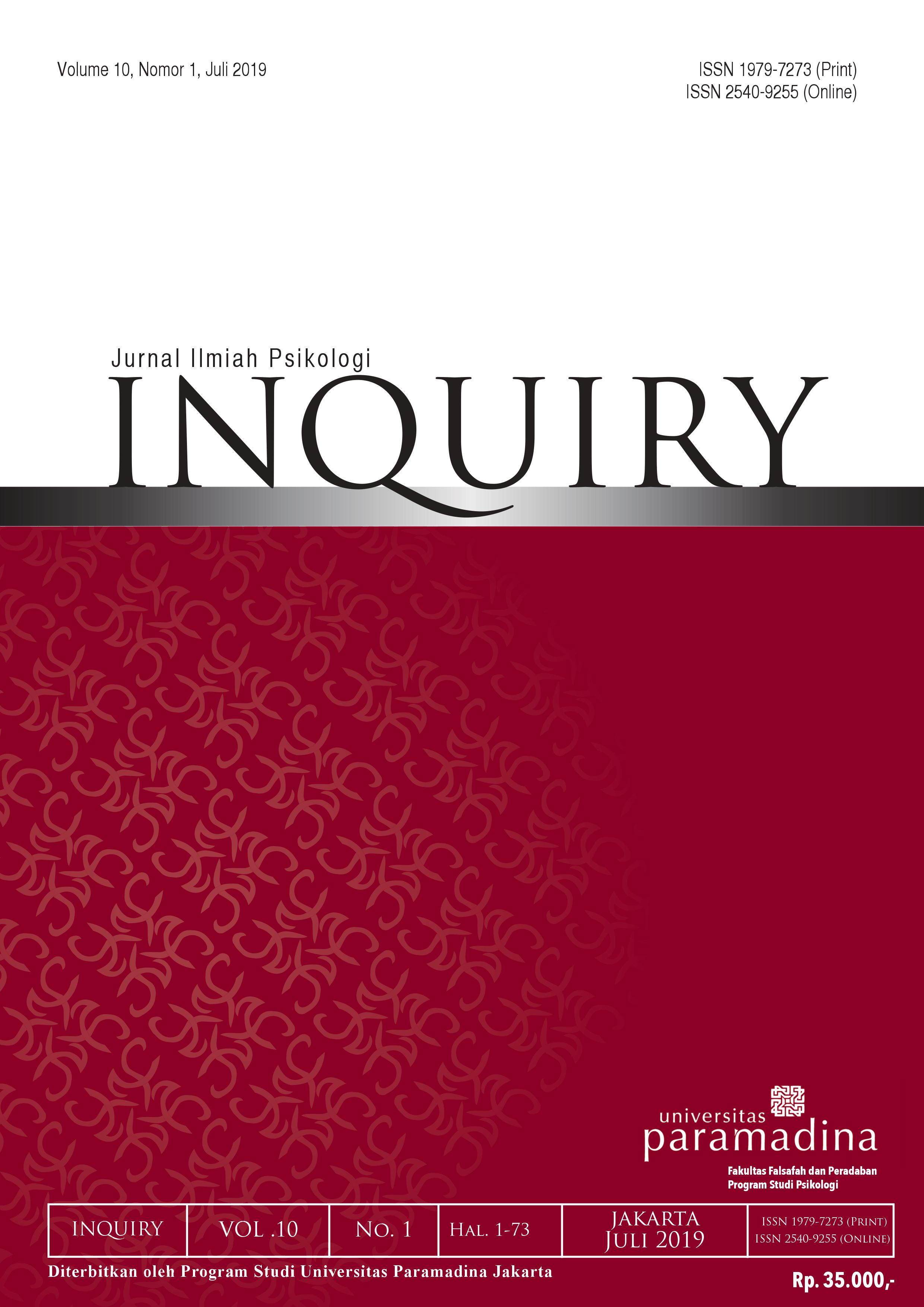INTERVENSI FEEDBACK PESAN NORMA SOSIAL UNTUK MENINGKATKAN AKTIVITAS FISIK REMAJA
DOI:
https://doi.org/10.51353/inquiry.v10i1.281Keywords:
Aktivitas fisik, langkah kaki, umpan balik, norma sosial, norma deskriptif, norma injungtif.Abstract
Penelitian ini berupaya untuk meningkatkan perilaku aktivitas fisik pada remaja di Kabupaten Pangkajene dan Kepulauan. Penelitian ini dilakukan melalui dua tahap. Pada tahap awal peneliti melakukan studi baseline dan dilanjutkan dengan tahapan intervensi. Focus theory of normative conduct, yang menyatakan ada dua jenis norma yakni norma deskriptif dan norma injungtif, digunakan sebagai kerangka teoretik. Aktivitas fisik dalam penelitian ini didefinisikan sebagai jumlah langkah kaki individu menggunakan aplikasi dalam ponsel pintar. Partisipan adalah remaja yang berusia 15-18 tahun (N = 64) yang tinggal di Pangkajene dan Kepulauan. Dalam 14 hari, setiap partisipan diminta untuk melaporkan jumlah langkah kakinya setiap hari, kemudian akan mendapatkan umpan-balik berupa pesan norma sosial. Penelitian ini dianalisis dengan One-way repeated measures ANOVA untuk melihat efektivitas pemberian umpan balik norma sosial yang diberikan setiap hari sesuai dengan kelompok mereka. Hasil penelitian ini mengindikasikan bahwa kelompok yang mendapatkan intervensi umpan balik berisi pesan norma deskriptif dan norma injungtif tercatat memiliki jumlah langkah kaki yang lebih banyak dibandingkan dengan kelompok yang hanya mendapatkan umpan balik berisi pesan norma deskriptif dan kelompok kontrol (p < .05). ÂReferences
Althoff, Tim., SosiÄ, Rok.,.Hicks, Jennifer, L., King, Abby, C,. Delp, Scott, L., & Leskovec, Jure. (2018). Large-scale physical activity data reveal worldwide activity inequality. Nature. 547(7663): 336–339. doi: 10.1038/nature23018
Berkowitz, A, D. (2004). An Overview of the Social Norms Approach. To be published as Chapter 13 in L Lederman, L Stewart, F Goodhart and L Laitman: Changing the Culture of College Drinking: A Socially Situated Prevention Campaign, Hampton Press.
Burger, J. M., & Shelton, M. (2011). Changing everyday health behaviors through descriptive norm manipulations. Psychology Press: 1-9. 10.1080/15534510.2010.542305
Cialdini, R. B., Reno, R. R., & Kallgren, C. A. (1990). A focus theory of normative conduct: Recycling the concept of norms to reduce littering in public places. Journal of Personality and Social Psychology, 58, 1015-1026. doi:10.1037/0022- 3514.58.6.1015s15327965pli1604_03
Elmagd, Mohammed, Abou. (2016). Benefits, need and importance of daily exercise. International Journal of Physical Education, Sports and Health, 3(5), 22-27.
Field, Andy. (2009). Discovering Statistics Using SPSS. London: Sage. Publicication Ltd.
Fuchs, Reinhard., Goehner, Wiebke., & Seelig, Harald. (2011). Long-Term Effects of a Psychological Group Intervention on Physical Exercise and Health: The MoVo Concept. Journal of Physical Activity and Health, 8, 794 -803
Heinrich, K. M., Jokura, Y., & Maddock, J. E. (2008). Exercise self-efficacy and social norms as psychological predictors of exercise behavior. Athletic Insight, 10, 1-12. Retrieved from www.athleticinsight.com/Back_Issues.htm
Goldstein, N. J., Cialdini, R. B & Griskevicius, V. 2008. A Room with a Viewpoint: Using Social Norms to Motivate Environmental Conservation in Hotels. Journal of Consumer Research, 35. DOI: 10.1086/586910
Gulam, Aafid. (2016). Need, Importance and Benefits of exercise in daily life. International Journal of Physical Education, Sports and Health. 3(2): 127-130.
Katadata.co.id. (2016, November 10). Hanya 27% Penduduk Indonesia Rutin Berolahraga. Diakses dari: https://databoks.katadata.co.id/datapublish/2016/11/10/hanya-27-penduduk-indonesia-rutin-berolahraga / Pada tanggal 5 Oktober 2018
Okun, M. A., Ruehlman, L., Karoly, P., Lutz, R., Fairholme, C., & Schaub, R. (2003). Social Support and Social Norms: Do Both Contribute to Predicting Leisure-time Exercise? American Journal of Health Behavior, 27, 493. Doi:10.5993/AJHB.27.5.2
Perkins, HW and Berkowitz, AD (1986). Perceiving the Community Norms of Alcohol Use Among Students: Some Research Implications for Campus Alcohol Education Programming. International Journal of the Addictions, 21:961-976.
Priebe, C. S., & Spink, K. S. (2012). Using messages promoting descriptive norms to increase physical activity. Health Communication, 27, 284-291. doi:10.1080/10410236.2011.585448
Nolan, J. M., Schultz, P. W., Cialdini, R. B., Goldstein, N. J., & Griskevicius, V. (2008). Normative Social Influence is Underdetected. Society for Personality and Social Psychology, Inc. 34:7. 913-923 DOI: 10.1177/0146167208316691
Schaffer, L. S. (1983). Toward Pepitone's vision of a nonnative social psychology: What is a social norm? Journal of Mind and Behavior, 4, 275-294.
Schultz, P., Nolan, J. M., Cialdini, R. B., Goldstein, N. J., & Griskevicius, V. (2007). The constructive, destructive, and reconstructive power of social norms. Psychological Science, 18, 429-434. doi:10.1111/j.1467-9280.2007.0191
WHO. 2018, Oktober 22. Global Strategy on Diet, Physical Activity and Health. Diakses dari: http://www.who.int/dietphysicalactivity/factsheet_young_people/en//Pada tanggal 1 Desember 2018.
Downloads
Published
Issue
Section
License
Copyright (c) 2019 Muflih Wahid Hamid, Bagus Takwin

This work is licensed under a Creative Commons Attribution-ShareAlike 4.0 International License.





